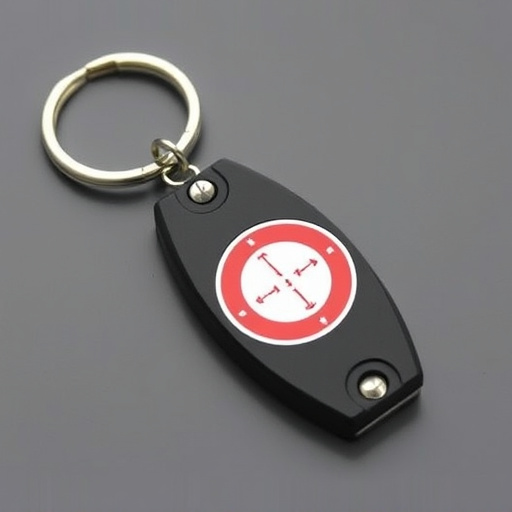Carrying Legal Keychain Weapons for Students requires understanding regional laws and school policies regarding size, functionality, and age restrictions. Compliance involves researching local regulations on self-defense tools, concealed carry permits, and educational institution requirements to avoid legal issues and protect student rights.
In today’s world, ensuring student safety extends beyond classrooms. With the rise in personalized keychains incorporating protective features, understanding legal requirements is paramount. This article guides you through navigating the complex landscape of Legal Keychain Weapons for Students. We delve into defining what constitutes a legal keychain weapon, exploring regional laws and regulations, age restrictions, and permit mandates. Additionally, we highlight essential safety features that such devices should possess to foster secure learning environments.
- Understanding Legal Requirements for Keychain Weapons
- Defining Legal Keychain Weapons for Students
- Regional Laws and Regulations: A Comprehensive Check
- Age Restrictions and Permit Mandates
- Safety Features Essential in Student Keychains
Understanding Legal Requirements for Keychain Weapons
When it comes to keychain safety devices, understanding the legal requirements is paramount, especially in schools. The legality of keychain weapons varies significantly across regions and educational institutions. In many places, students are allowed to carry certain types of legal keychain weapons for self-defense purposes, subject to specific guidelines. These guidelines often dictate the size, shape, and functionality of such devices, ensuring they do not resemble conventional firearms or blades that could cause harm.
For instance, some schools and jurisdictions permit small, non-lethal self-defense tools like pepper spray or personal alarms attached to keychains. These items are typically considered legal keychain weapons for students when carried in plain sight and used only in emergency situations. It’s crucial for students to familiarize themselves with their school’s policy and local laws regarding the possession of keychain weapons to avoid any legal complications.
Defining Legal Keychain Weapons for Students
In many regions, the concept of legal keychain weapons specifically for students has emerged as a unique and sometimes controversial topic. These are compact self-defense devices designed to fit on keychains, intended to provide individuals with an extra layer of security while at school or in public areas. However, defining what constitutes a legal keychain weapon is essential due to varying local regulations.
The classification of these small devices as legal weapons depends on several factors, including size, functionality, and the jurisdiction’s specific laws. Some countries and states allow certain types of keychain-mounted tools that can fold into a claw or have a non-lethal force component, like pepper spray or flashlights with stun capabilities. But it’s crucial for students considering carrying such devices to understand their local legal framework, as possession of what may seem like harmless accessories could result in penalties or restrictions, especially on school premises.
Regional Laws and Regulations: A Comprehensive Check
When considering the deployment of legal keychain weapons for students, it’s crucial to conduct a thorough check of regional laws and regulations. Each jurisdiction has its own set of rules regarding concealed carry permits, restrictions on self-defense tools, and specific requirements for educational institutions. Students and school administrators must navigate these complexities to ensure compliance with local, state, or provincial laws.
A comprehensive check should involve reviewing the legal definition of a keychain weapon, understanding permissible use cases, and identifying any prohibitions or special conditions. It’s essential to consult official government resources, reach out to local law enforcement agencies, and stay updated on legislative changes that could impact student safety measures. This meticulous process is vital to protect both students’ rights and the institution’s legal standing.
Age Restrictions and Permit Mandates
When considering legal keychain safety devices, especially those designed as Legal Keychain Weapons for Students, age restrictions and permit mandates are crucial factors to understand. Many countries and regions have specific laws governing the possession and carrying of self-defense tools, with strict regulations targeting minors. These restrictions aim to ensure that only responsible adults can access such devices, promoting public safety and minimizing potential risks.
In most jurisdictions, individuals under a certain age (typically 18 or 21) are prohibited from owning and carrying keychain weapons due to their perceived vulnerability and lack of maturity. To legally obtain and carry a keychain self-defense tool, students usually need to meet specific criteria, such as completing a safety training course or having parental/guardian consent, depending on local regulations.
Safety Features Essential in Student Keychains
In today’s digital era, students carry a multitude of items with them daily—from laptops to wallets and now even personal devices. With this increased accessibility comes heightened security risks, especially when it comes to personal belongings like keys. This is where keychain safety devices step in as indispensable tools for students looking to safeguard their assets.
When considering legal keychain weapons for students, safety features should be the top priority. These tiny yet potent devices must incorporate robust locking mechanisms and durable construction to resist tampering or unauthorized access. Additionally, they should comply with relevant legal requirements governing personal defense tools, ensuring that students remain within the boundaries of the law while protecting themselves. Incorporating emergency contact information and easy-to-use activation systems further enhances their utility, making them not just a safety feature but also a peace of mind companion for students navigating campus life.
When considering the legal requirements for keychain safety devices, especially for students carrying them on campus, it’s crucial to navigate a complex web of regional laws and regulations. Understanding these guidelines ensures not only compliance but also prioritizes student safety. Key aspects include recognizing what constitutes a legal keychain weapon, understanding age restrictions and permit mandates, and ensuring any chosen device is equipped with essential safety features. By staying informed about these factors, students can protect themselves while respecting the law.
